Artist Hannah Witner on Identity, Play, and the Joy of Experimentation
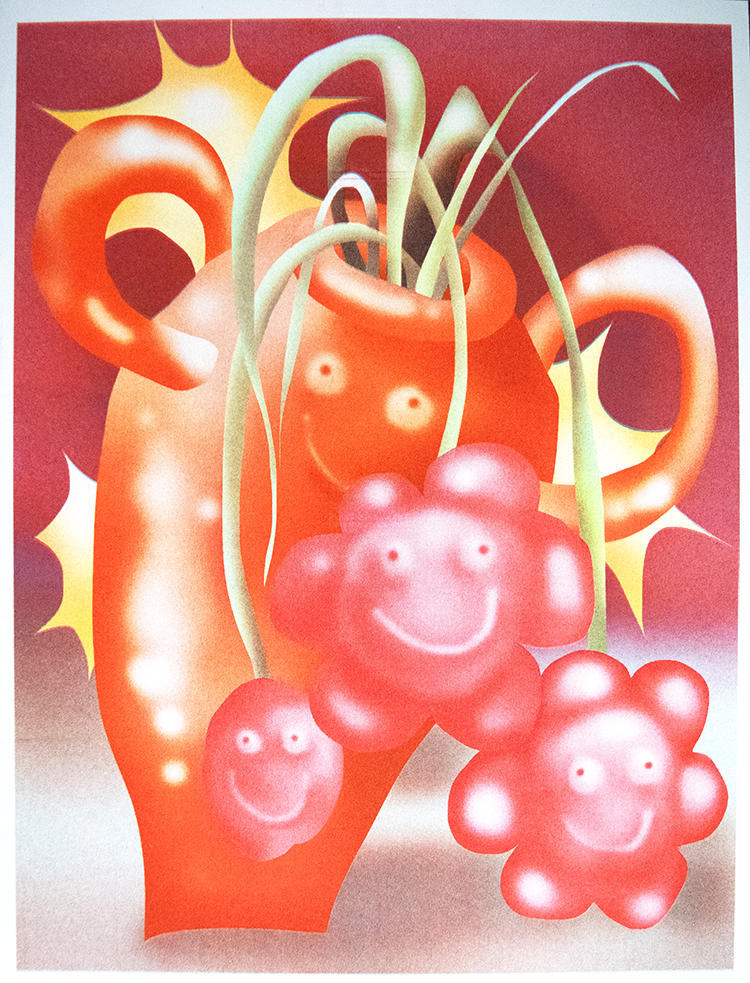
Meet Hannah Witner—a passionate artist with a unique voice and vision. In this interview, Hannah opens up about what inspires her work, from personal memories to her deep sense of connection and identity. She shares how she blends traditional techniques with new ideas, creating art reflecting her heritage and a modern perspective. Through her words, we glimpse the emotions behind her creations and the stories they tell. Hannah’s honesty and passion shine through, offering readers a fresh perspective on creativity and the heart that drives her work.
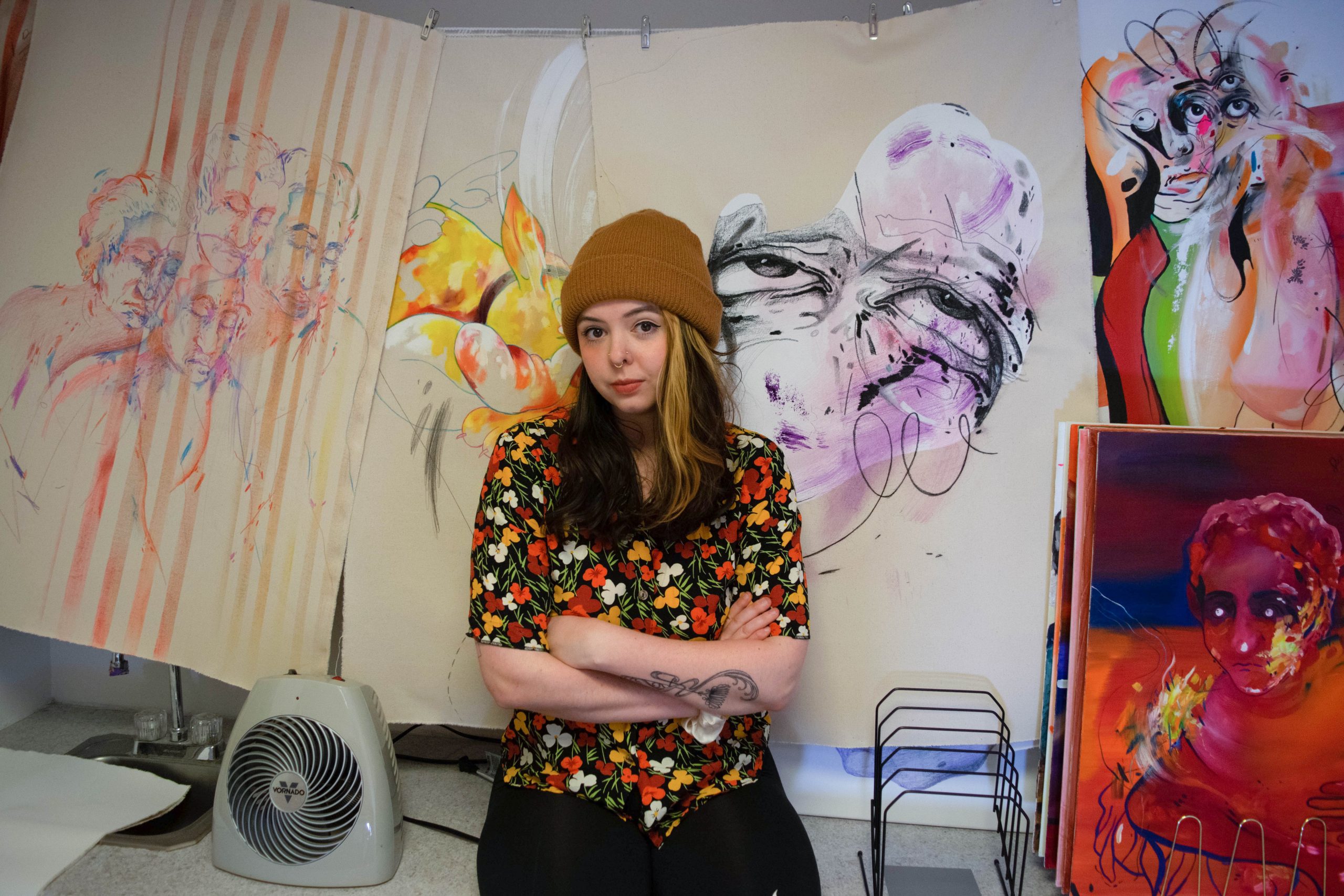
Hannah Witner is a Brooklyn-based multidisciplinary artist, designer, and art director who explores the fluid boundaries between the body, environment, and technology. Born in Charlotte, NC, she earned her BFA from Parsons School for Design. She has since developed a practice that spans oil painting, airbrush painting, fiber arts, ceramics, digital media, riso printing, and illustration. Her work evokes the disorienting logic of a fever dream, using biomorphic forms and surreal landscapes to challenge perceptions of identity, femininity, and otherness. She has participated in artist residencies in Hungary, Portugal, France, Serbia, Switzerland, and Iceland. She works as an art director alongside her studio practice, bringing a refined sense of visual storytelling and conceptual depth to her work. She is deeply engaged in artist communities around NYC and committed to fostering dialogue around how digital culture, transformation, and embodiment shape contemporary identity.
1. What inspired you to become an artist?
I don’t think I ever chose it; I just had to be one. I’ve been creating since I could hold a pencil – my whole life has been about loving art. I am so grateful for all my art classes growing up and my passion for creating – even when the real world tries to tell you that art doesn’t matter. My artistic journey took off when I worked alongside a small art group and studio in high school. There, I had a couple of very influential mentors who taught me about processes, techniques, philosophies, ways of life, experimentation, and many fantastic opportunities and endeavors for artists.
From there, I studied at Parsons, where I learned more concrete design principles and immersed myself in collaborative projects and multidisciplinary exploration. I have a day job as an art director – I have a vast love for design – and selling paintings alone isn’t always the most lucrative. I didn’t ever “become” an artist; I am just one, and I have to keep creating. For my brain and well-being, making art makes me feel something I can only imagine is magic.
I have to keep creating for my own brain and my own well-being, making art makes me feel something that I can only imagine is magic.
Hannah Witner
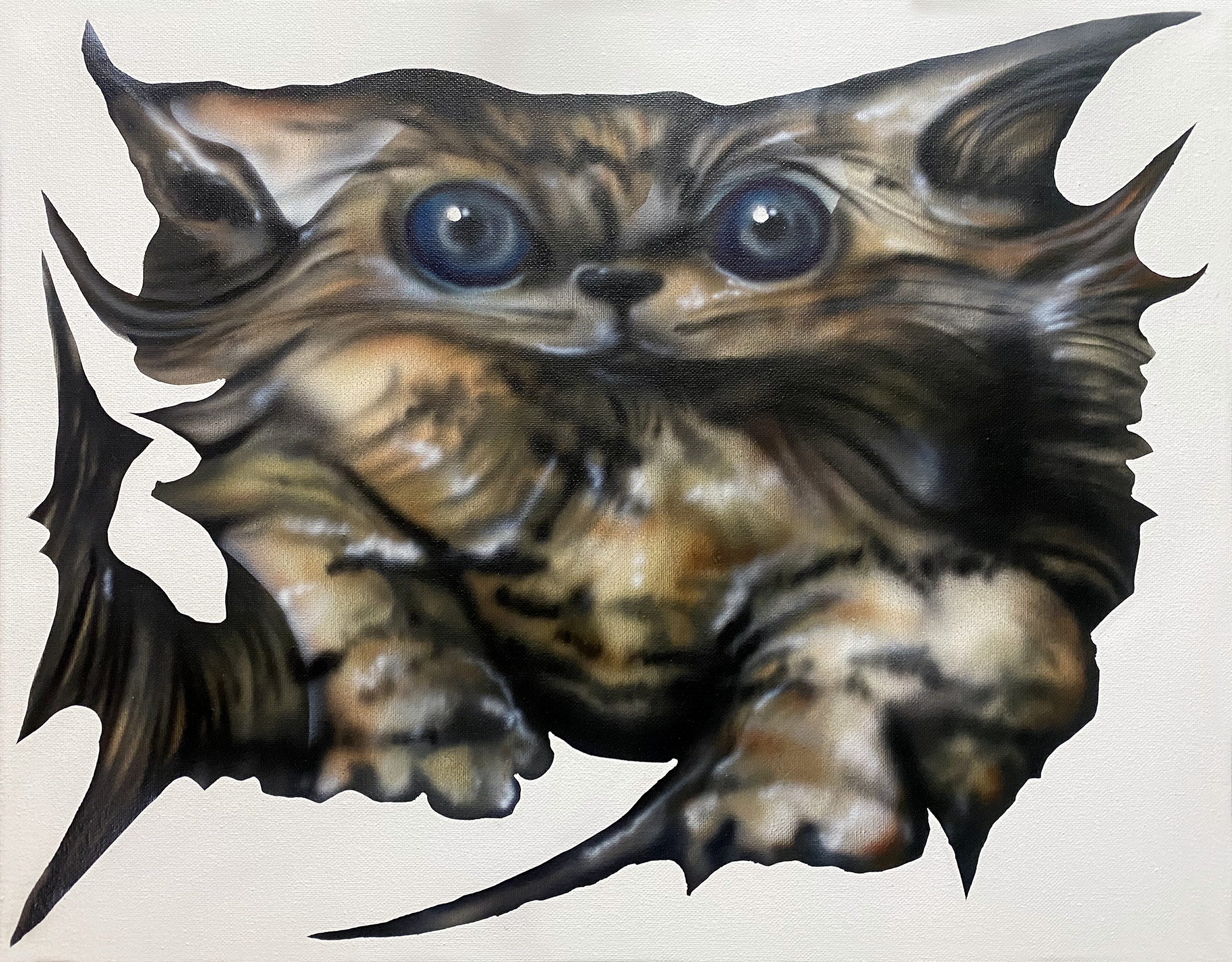
2. What is your creative process like from start to finish?
My creative process is fluid and intuitive, often beginning with collecting inspiration from moments, objects, or dreams, and is a continuous push and pull of reactions from my environment, feelings, and fascinations. I’m drawn to strange textures, fleeting expressions, distortions in light, and overlooked details. I sketch, take notes, and photograph things that catch my eye, letting these fragments build into something more – or not. Most of the time, I like to start making something, and an idea will take shape. Mistakes and accidents often become the most interesting elements. Whether I’m working with oil paint, airbrush, digital illustration, furniture, or fiber arts, I usually work on multiple pieces at once – generally because one idea leads to another, and I have to keep exploring it to see what happens – I also, get bored working on any one piece for too long.
These multiple pieces often have different stages of production, and they will influence each other as I work on them concurrently. I might let a piece sit for a while, allowing the concept to evolve before committing to the final execution. Each series and material has a different associated process; usually, my process changes depending on the type of work I’m creating in that period. Part of the work is figuring out this process and perfecting it for each group of pieces. I enjoy the push and pull between control and spontaneity—sometimes, a piece follows my original idea, but often, it takes on a life of its own. Of course, there is always planning in any piece since I have to purchase materials, create masks, and prepare for timing. Before actually doing it, I think about what I will make, letting it marinate fully. Some pieces naturally fit into a series, while others spark new directions in my practice. I also think about how my work exists in a space, sometimes incorporating it into installations or collaborative projects or seeing them as a cohesive set to be seen together.
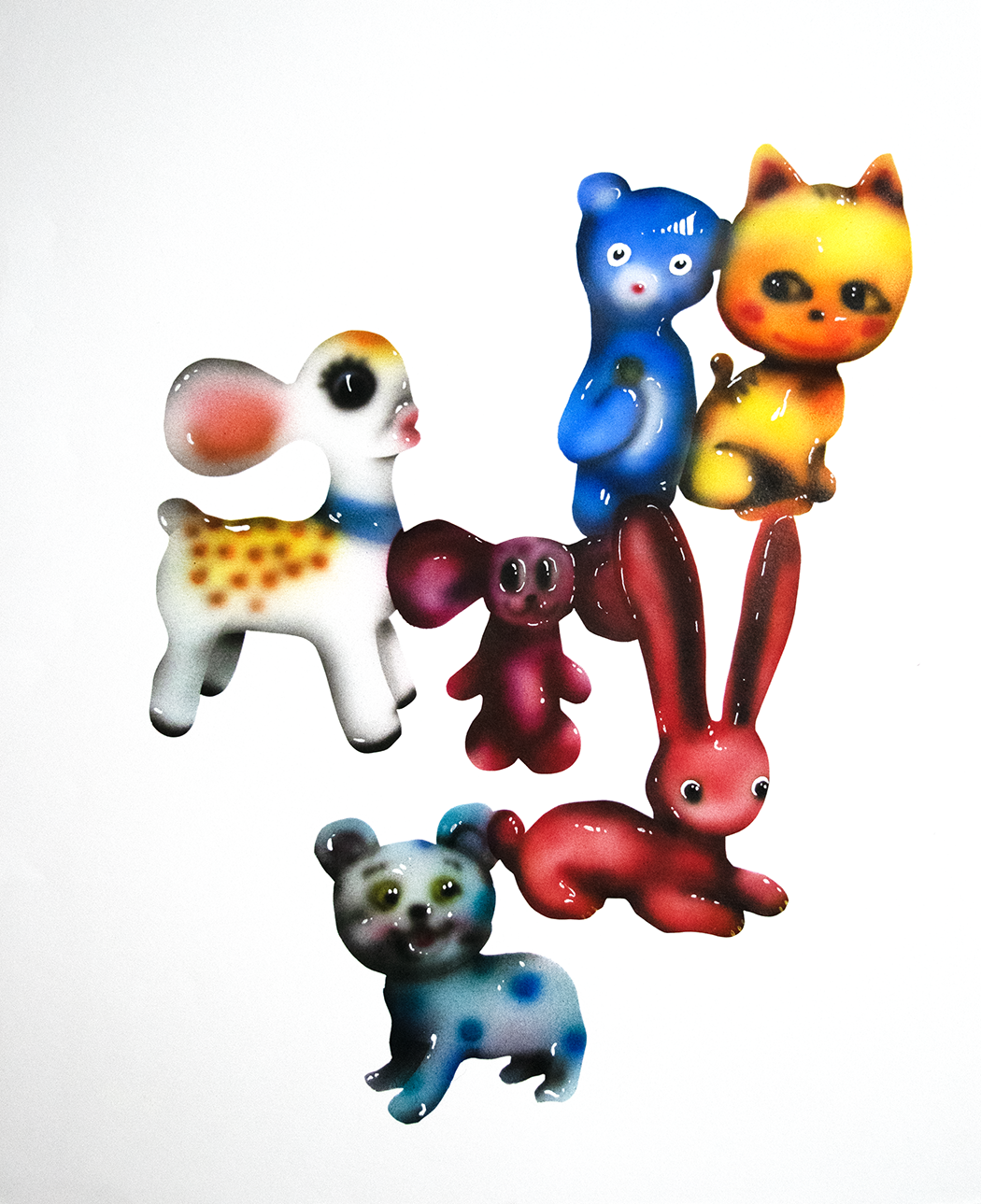
3. Where do you find inspiration for your artwork?
I find inspiration in everyday life’s strange, fleeting, and often overlooked details, my feelings within my body, dreams, explorations into unusual ways of the world and social and community topics. The mundane and forgotten moments of daily life often spark ideas. These small, strange details make me pause and imagine new worlds within them – the way light warps through a smudged window, the shifting forms of liquids, the way bodies blur into their environments, the way technology fuses with our psyche—these moments of distortion and transformation fascinate me. I’m drawn to biomorphic forms, movement, and the idea of boundaries dissolving, whether between self and surroundings, physical and emotional states, or even the real and the surreal.
Much of my inspiration comes from a sense of childlike wonder and play—approaching art with curiosity, freedom, and a willingness to embrace the unexpected. I try not to take anything too seriously, allowing my work to evolve through experimentation rather than rigid planning. Like a kid discovering the world for the first time, I love to make things that bring an eerie smile to the viewer’s face. There’s magic in letting go of control and treating the process like a game rather than a task. This playfulness keeps my work fresh and alive, reminding me that creativity doesn’t always have to be about perfection—it’s about exploration, strangeness, discomfort, comfort, and staying open to the unknown. Emotion and memory play a significant role as well. Sometimes, inspiration comes from personal experiences, moments of nostalgia, or even fleeting emotions that I try to capture in form and color. Dreams and the subconscious also feed into my work, offering surreal, distorted imagery I can pull.
The city, people, human beings, and people-watching are also significant sources of inspiration – figuring out how other people tick, think, and see helps to inform my curiosity. Working with other artists, curating group shows, and participating in residencies exposed me to new ways of thinking and making. Of course, I also get inspiration from other work – other artists’ work, furniture, interiors, movies, clothing, videos, museums, animation, and other media that I see online or in the real world. Ultimately, my inspiration comes from a curiosity about transformation—how things shift, merge, and break apart physically and conceptually. I’m always searching for new ways to depict the in-between spaces of existence, whether through goops, globs, distortions, or fluid landscapes.
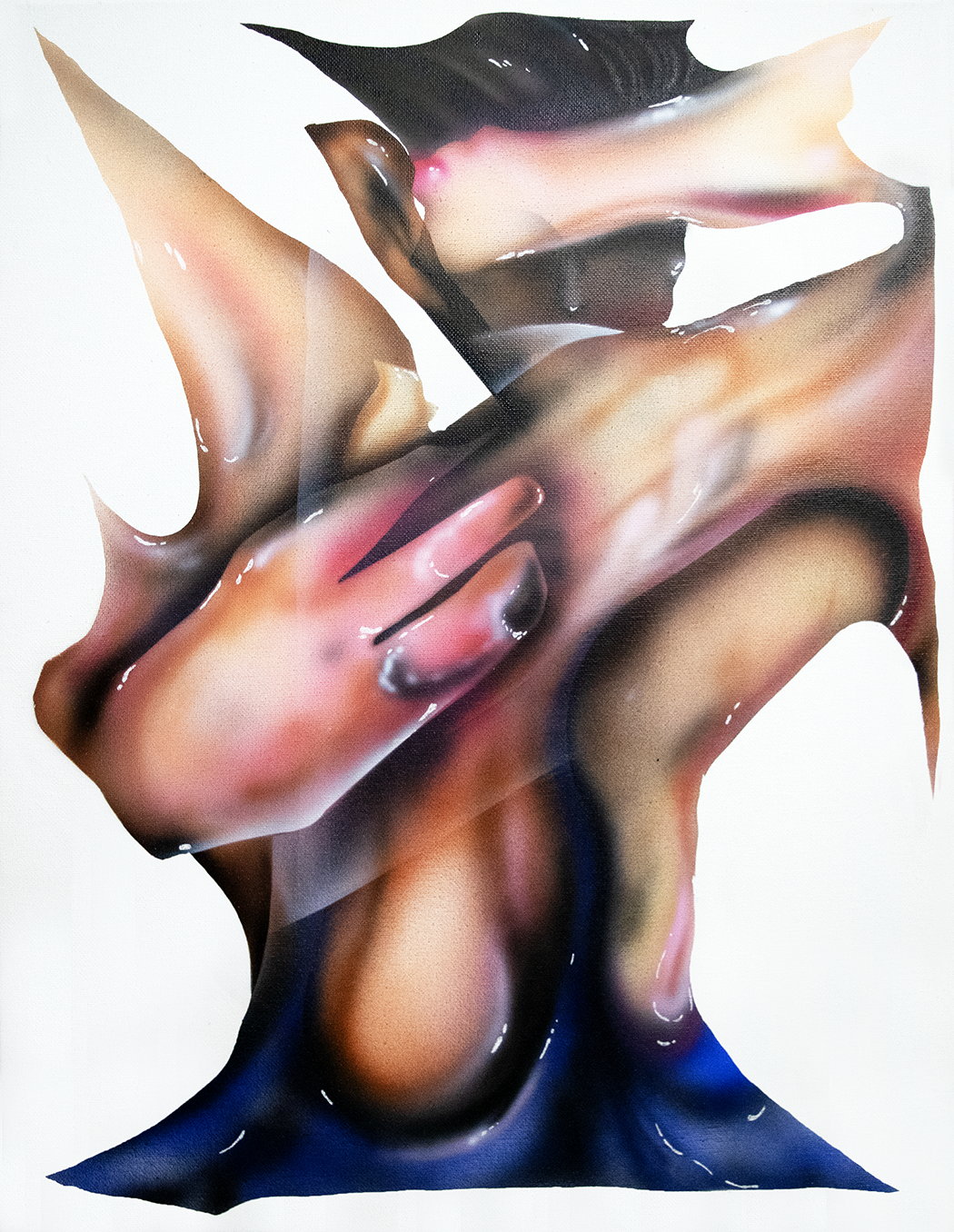
4. How do you handle creative blocks or periods of low inspiration?
Creative blocks are a part of any creative process, and most artists struggle with it, although it’s never on the IG highlight reel. When I hit a creative block or feel uninspired, I try to shift my mindset from pressure to play. Instead of forcing ideas, I allow myself to experiment without expectations—working with unfamiliar materials, making quick sketches, or creating something purely for fun. Sometimes, working with my hands and engaging with materials is enough to shake something loose. If nothing else, it gives me the time to enter a flow state and not think about the process for a little while. I will also work on other things that aren’t immediately part of my capital “A” Art Practice and do a craft, furniture restoration, or DIY in my apartment. Stepping away from my work ultimately can also be helpful.
I people-watch, go thrifting, deep clean, rearrange things, dumpster dive, watch a movie, or consume other media. If I don’t feel it, I rest and remember that not every second of every day can be productive. Experiencing life outside of just making art is also essential for art-making; it gives us a real-world connection to something outside of ourselves. I also return to old sketchbooks, past works, or unfinished pieces, looking for ideas I may have overlooked or want to return to. Seeing someone else’s process or discussing creative struggles reminds me that blocks are part of the long game. I usually find my way back to making with renewed energy, sometimes with a new medium, theme, or technique that I get excited about.
Creativity doesn’t always have to be about perfection—it’s about exploration, strangeness, discomfort, comfort, and staying open to the unknown.
Hannah Witner
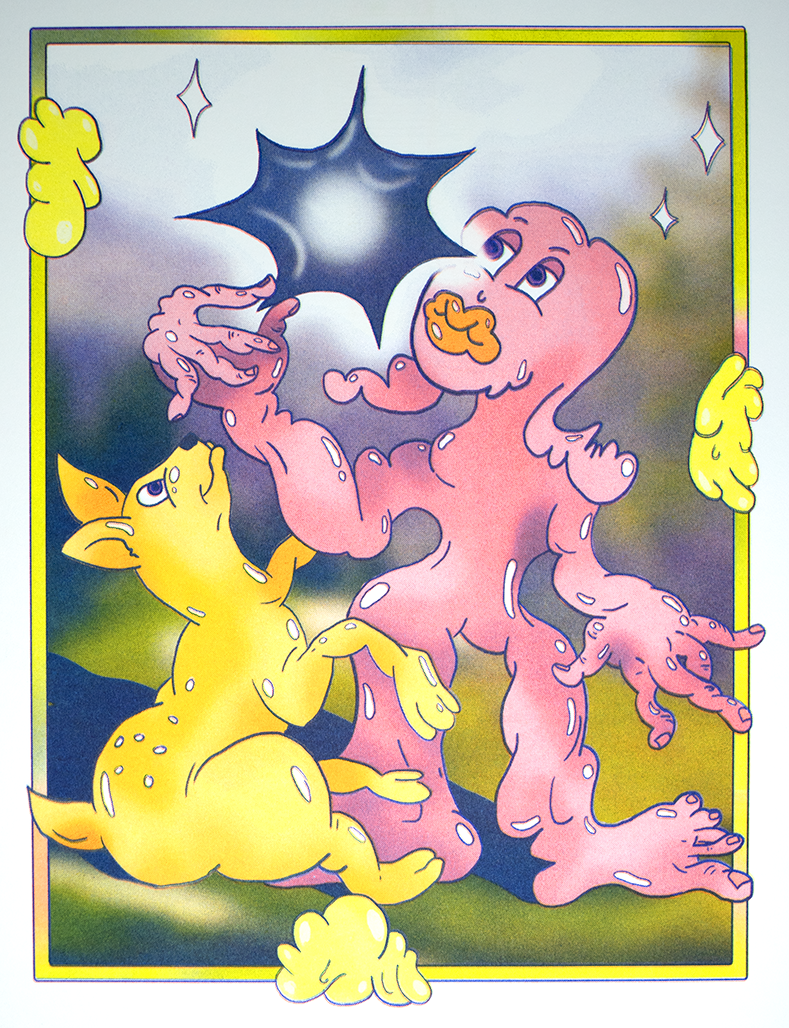
5. What do you hope people take away from experiencing your art?
I hope people walk away from my work with a sense of curiosity, recognition, and maybe even a little discomfort—like they’ve glimpsed something both familiar and uncanny at the same time. My work explores the anomalies between self and environment, body and space, identity and transformation, culture and technology. I want viewers to question how they perceive themselves and the world around them, to feel a sense of motion, distortion, or in-betweenness. Perceived comfort often draws people in and disturbs them enough to love their reaction. We live in a world that usually demands clear definitions, but I’m more interested in the spaces in between. I also hope my work sparks a feeling rather than just a thought—whether it’s nostalgia, unease, tenderness, or something more complicated to define in words. At the same time, I want my art to invite playfulness and wonder.
My work isn’t just about questioning reality—it’s also about celebrating its weirdness and the weirdness in all of us. I hope people feel a sense of freedom and an openness to seeing beauty in the unconventional, the overlooked, and the bizarre. There’s a mischievousness in my process, and I hope that translates into encouraging others to embrace experimentation, imperfection, and the beauty of the unknown in their lives. I also love when my work sparks conversation, especially when it resonates with people in ways I hadn’t expected. Art isn’t just about what I put into it—it’s also about what others bring. If my work can serve as a mirror, a question, or a moment of unexpected connection, then it’s alive in the best possible way.

Through her heartfelt reflections, Hannah reminds us that art has the power to inspire, heal, and connect us to something greater than ourselves. Her journey encourages us to accept the creativity and authenticity in our own lives. To learn more about Hannah, click here.
